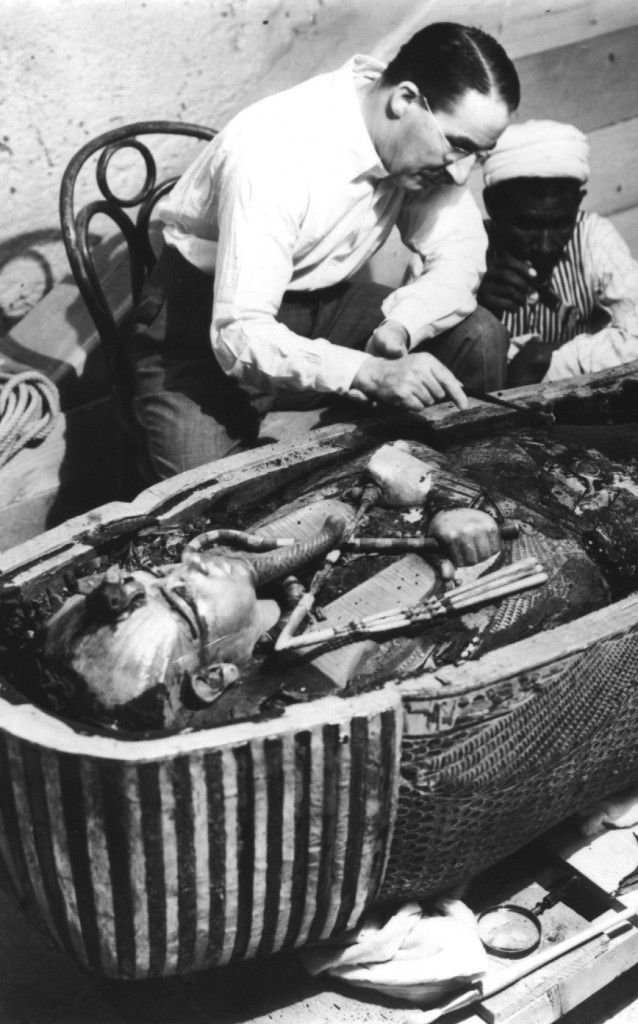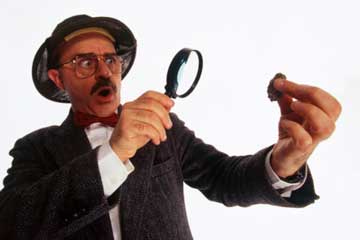This afternoon, I decided to indulge in a little noontime respite by settling down with a tuna fish sandwich and some cable TV. In negotiating between 30 Rock and My Little Pony: Friendship is Magic, I eventually ended up with Oddities, the third member of the Teddy’s Favorite Shows Triumvirate. This show also provides an uncanny manifestation of a mainstream archeology (note the website’s dappled display of biological anthropology)– that is, antiquing– as an entertainingly ruthless pursuit of historical curios.
 Oddities details the exploits of a Brooklyn antique shop that draws in all sorts of wild and crazy products and people. Their wares range from sideshow props to quack medical devices to bits of anatomy (real or fabricated). The proprietors make their living by hunting out or discovering new items, not excavating items from their original geological context as an archaeologist might, but certainly unearthing items from the various nooks and crannies of society itself as the items are usually taken private collectors or from collections being decommissioned by museums. This form of alternative salvage archaeology (all too appropriately Brooklyn) leads the Oddities cast to some rather unique items accrued for somewhat soulless business.
Oddities details the exploits of a Brooklyn antique shop that draws in all sorts of wild and crazy products and people. Their wares range from sideshow props to quack medical devices to bits of anatomy (real or fabricated). The proprietors make their living by hunting out or discovering new items, not excavating items from their original geological context as an archaeologist might, but certainly unearthing items from the various nooks and crannies of society itself as the items are usually taken private collectors or from collections being decommissioned by museums. This form of alternative salvage archaeology (all too appropriately Brooklyn) leads the Oddities cast to some rather unique items accrued for somewhat soulless business.
In Season 3’s “The Power of A Grey Skull”, two of the cast members are asked to find an eye-catching piece for a local tattoo parlor. They eventually come upon a Peruvian elongated skull; take a look at how they handle the acquisition in this two-minute clip that refuses to be embedded in WordPress. Do you agree with the handlers’ assessments? What do you make of the gentleman who is selling the skull? What does each party hope to gain from the transaction?
In another episode, the proprietors are contacted by a seller who wishes to sell a mummified hand. They have to determine a) if it is authentic, and b) if they can sell it. How does their procedure differ from an archaeologist’s (particularly in terms of motivation)?
Once they determine the item is authentic, they have to go through their attorney to determine if they can legally sell it (if I remember correctly, they could not legally sell a form of human remains whose value exceeded $5000.) Do you think these items should be allowed to be collected/displayed/traded out if they don’t meet the criteria to be considered “valued” artifacts? Where do our morals stand on such issues, as scientists, and as part of the public ourselves? Isn’t a delight in rare and mysterious things from ages past the very reason we went into archaeology to begin with? Who are we to take an element of that away from the public, especially if they cannot afford to accredit themselves simply to partake in a dig, and especially if they items they are collecting are essentially museum scrap?



 . The exhibit’s home screen has a sidebar with a list of subheadings containing links- the first two of which focus on archaeologists and archaeology as a discipline. These hypermediate the exhibit as constructed, as the bearer of praxis and not just pure information. According to the first of these subheadings, the exhibit was inspired by a Harris poll that assessed the American public’s understanding of archaeology and attempts to move the public’s conception of archaeology away from archaeology and toward an understanding of publicly funded archaeology. The second subheading acknowledges past misrepresentations of early inhabitants of America and discusses the nomination of new National Historic landmarks. Three more subheadings divide the nation into the Midwest, Northeast, and Southeast. These subheadings begin with a migratory narrative of the prehistoric people in the area then have further panels focusing on archaeological and geological conclusions about the area and artifacts.
. The exhibit’s home screen has a sidebar with a list of subheadings containing links- the first two of which focus on archaeologists and archaeology as a discipline. These hypermediate the exhibit as constructed, as the bearer of praxis and not just pure information. According to the first of these subheadings, the exhibit was inspired by a Harris poll that assessed the American public’s understanding of archaeology and attempts to move the public’s conception of archaeology away from archaeology and toward an understanding of publicly funded archaeology. The second subheading acknowledges past misrepresentations of early inhabitants of America and discusses the nomination of new National Historic landmarks. Three more subheadings divide the nation into the Midwest, Northeast, and Southeast. These subheadings begin with a migratory narrative of the prehistoric people in the area then have further panels focusing on archaeological and geological conclusions about the area and artifacts.